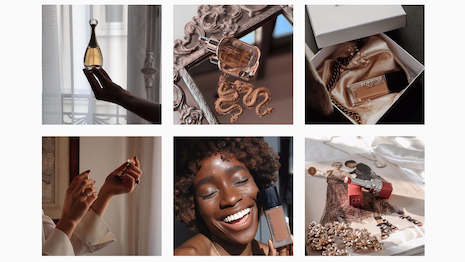 Facebook is the most popular social network for UGC. Image credit: Olapic
Facebook is the most popular social network for UGC. Image credit: Olapic
New research shows that more than half of social media users find user-generated content to be more trustworthy and authentic than brand images. According to a new report from Olapic, 44 percent of social media users follow influencers, including the majority of U.S. respondents. More than half of users have directly mentioned or tagged brands on social media. “Recommendations from friends and contemporaries are more relatable and authentic than brand-generated images,” said Brett Zucker, chief marketing officer at Monotype, parent company of Olapic. “Consumers are going to share their real, unfiltered feelings about the products and services they like — and don’t like — so their content is more trustworthy to other consumers.” Olapic’s report is based on a survey of 5,000 global social media users, including 1,000 each in the United Kingdom, United States, France and Germany. Peer feedback Nearly all social media users, 95 percent, have interacted with consumer-generated images. More than six in 10 view user-generated content several times a week. Facebook is the leading social network for UGC, followed by Instagram. While Instagram is the preference for fashion and beauty inspiration, Facebook is the preferred resource for travel information.
Instagram post from Fortnum for a social media contest Younger respondents also strongly favor Instagram, while more than half of older users prefer Facebook. The crucial segment of users between 24 and 34 years old falls in the middle, with 41 percent picking Facebook as their first choice and 37 percent choosing Instagram. Although 44 percent of global social media users follow influencers, these personalities have more of an impact on younger consumers. Sixty-four percent of 16- to 22-year-olds follow social media influencers, followed by 53 percent of 23- to 34-year-olds. Respondents from the U.S. were the most likely to follow social media influencers, while Germans were the least likely, at respective rates of 53 to 36 percent. About one in three social media users who follow influencers have discovered new brands through their posts. More than half, 52 percent, of all respondents have mentioned a brand on social media. Many of these users are motivated by appreciation, rather than frustration, towards a brand.View this post on Instagram
 Dior has a dedicated Instagram account for fan content
Thirty-nine percent of social media users report that appreciation for a product would encourage them to post a picture referencing a brand, while 37 percent show they enjoy a product by posting an image and tagging the brand. A quarter of users also mentioned a brand in hopes that their images would be shared.
“In the early days of ratings and reviews, you’d tend to get the overwhelming majority only connecting with a brand because they had a negative experience,” Mr. Zucker said. “Now, with a more visual way to connect and share their experiences, consumers are proactively seeking ways to create a more personal connection and share their brand pride.
“They want to be a part of the brand’s story and evolution,” he said.
Leveraging UGC
Although influencers and peers may have the appearance of being trustworthy and unbiased, consumers still find value and discover products through branded social media. For instance, 48 percent have made a purchase after watching a brand video.
Luxury brands often leverage UGC on social media in a bid for authenticity and increased engagement.
Beauty brands have a well of endless UGC on Instagram, as these fans are highly interactive, especially on the photo-centric application.
Chanel's @WeLoveCoco page reposts content curated from the hashtag #WeLoveCoco on Instagram. The profile’s link redirects users to its U.S. makeup page, featuring its best sellers at the top.
Dior has a page for fan content as well, @DiorBeautyLovers, which is even officially verified with Instagram’s blue checkmark (see story).
Capitalizing on common behavior of tech-savvy shoppers, British department store Fortnum & Mason is asking its fans to share photos of reused and reimagined Fortnum products on Instagram and Twitter with the caption, “Long Love #Fortnums.”
Through May 17, Fortnum will be reposting its favorite submissions on its own social media channels, as well as including them in a window display at its Piccadilly store (see story).
“Brands should leverage a mix of consumer-, brand- and even influencer-generated content in their visual marketing strategy,” Monotype’s Mr. Zucker said. “We’ve seen this work really well, particularly for retailers.
“They may be looking to get a new product off the ground by leaning heavily into influencers at the outset of a campaign, where they can control the message and seed the market with new product shots,” he said. “But the real magic happens when you start to see that trickle down to user generated content, which then amplifies and extends product coverage.”
Dior has a dedicated Instagram account for fan content
Thirty-nine percent of social media users report that appreciation for a product would encourage them to post a picture referencing a brand, while 37 percent show they enjoy a product by posting an image and tagging the brand. A quarter of users also mentioned a brand in hopes that their images would be shared.
“In the early days of ratings and reviews, you’d tend to get the overwhelming majority only connecting with a brand because they had a negative experience,” Mr. Zucker said. “Now, with a more visual way to connect and share their experiences, consumers are proactively seeking ways to create a more personal connection and share their brand pride.
“They want to be a part of the brand’s story and evolution,” he said.
Leveraging UGC
Although influencers and peers may have the appearance of being trustworthy and unbiased, consumers still find value and discover products through branded social media. For instance, 48 percent have made a purchase after watching a brand video.
Luxury brands often leverage UGC on social media in a bid for authenticity and increased engagement.
Beauty brands have a well of endless UGC on Instagram, as these fans are highly interactive, especially on the photo-centric application.
Chanel's @WeLoveCoco page reposts content curated from the hashtag #WeLoveCoco on Instagram. The profile’s link redirects users to its U.S. makeup page, featuring its best sellers at the top.
Dior has a page for fan content as well, @DiorBeautyLovers, which is even officially verified with Instagram’s blue checkmark (see story).
Capitalizing on common behavior of tech-savvy shoppers, British department store Fortnum & Mason is asking its fans to share photos of reused and reimagined Fortnum products on Instagram and Twitter with the caption, “Long Love #Fortnums.”
Through May 17, Fortnum will be reposting its favorite submissions on its own social media channels, as well as including them in a window display at its Piccadilly store (see story).
“Brands should leverage a mix of consumer-, brand- and even influencer-generated content in their visual marketing strategy,” Monotype’s Mr. Zucker said. “We’ve seen this work really well, particularly for retailers.
“They may be looking to get a new product off the ground by leaning heavily into influencers at the outset of a campaign, where they can control the message and seed the market with new product shots,” he said. “But the real magic happens when you start to see that trickle down to user generated content, which then amplifies and extends product coverage.” 